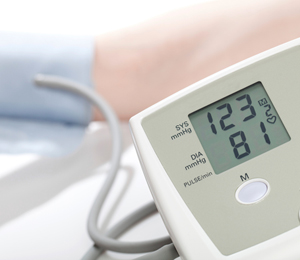 Innovative and sustainable ways of reducing systolic blood pressure remain a challenge both locally and globally, the CSANZ 2018 conference in Brisbane was told.
Innovative and sustainable ways of reducing systolic blood pressure remain a challenge both locally and globally, the CSANZ 2018 conference in Brisbane was told.
Presenting the prestigious Kempson Maddox Lecture, Professor Anushka Patel said elevated systolic blood pressure was now one of the leading risk factors contributing to disease burden worldwide.
While it was a long-established risk factor in high-income countries, there had been a rapid increase in the impact and importance of elevated systolic blood pressure in low and middle-income countries.
Professor Patel, chief scientist at the George Institute for Global Health, told the meeting data published last year estimated systolic blood pressure of at least 110-115 was associated with more than 10 million deaths – making it the leading cause of preventable death.
While not negating the importance of public health strategies targeting diet, sodium, alcohol, obesity and physical activity, she said an effective and affordable clinical approach was also critical.
Professor Patel, who authored the pivotal ADVANCE trial in 2007, said the evidence suggested blood pressure lowering treatment was beneficial irrespective of baseline blood pressure.
A more recent systematic review of the literature confirmed that blood pressure lowering treatment significantly reduced vascular risk across various baseline blood pressure levels and comorbidities.
The findings reinforce the need for focus on absolute cardiovascular disease risk rather than specific targets for individual risk factors, she said.
And Australian data confirmed that many people with a high absolute CV risk were not receiving appropriate therapy.
“We must move to an absolute risk approach. Even in Australia, many patients are missing out on highly effective treatment,” Professor Patel said.
She said the best clinical intention of gradually escalating from an initial blood pressure lowering drug was thwarted in practice by therapeutic inertia.
However there was now a significant body of work demonstrating that blood pressure lowering could be obtained with a combination of drugs at half standard doses.
She said the recent TRIUMPH study had demonstrated that a combination ‘triple pill’, consisting of telmisartan (20 mg), amlodipine (2.5 mg) and chlorthalidone (12.5 mg), could achieve better blood pressure control than usual care.
However getting such strategies implemented and to scale remained problematic.
A 2016 meta-analysis had shown a combination of approaches, including team based care, titration by non-physicians, health coaching and home blood pressure monitoring, was most effective in improving blood pressure control.
The George Institute has also been incorporating such features including mobile device-based clinical decision support in its SMARThealth projects to help manage risk factors for cardiovascular disease in both Indonesia and India.
Professor Patel said while cardiovascular disease was firmly on the global health agenda, the vast majority of the funding was still directed towards maternal and child health or communicable diseases.
“No country in the world has an unlimited budget to spend on healthcare,” Professor Patel said.
However there was evidence from SMARThealth India, soon to be published, that their program was relatively cost effective.